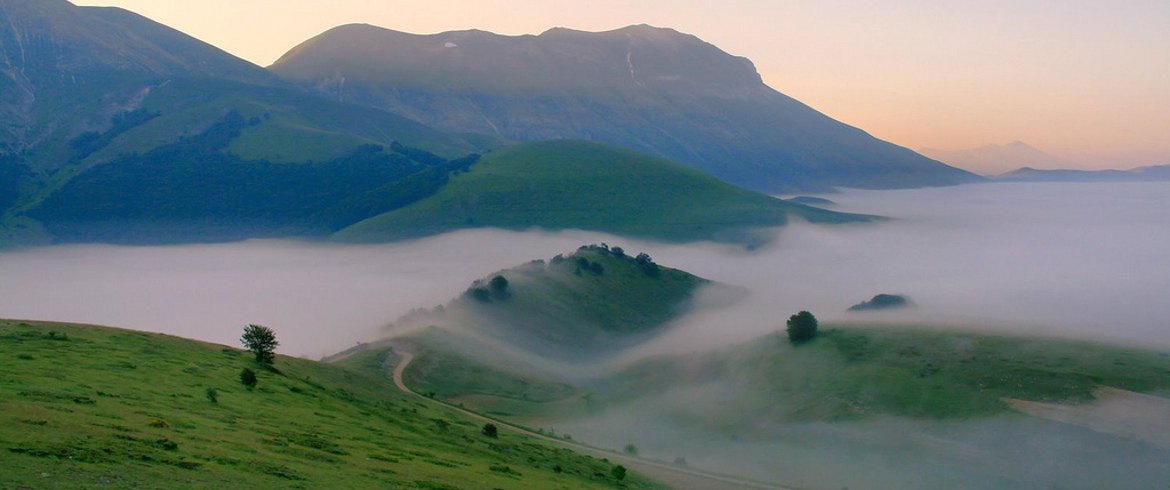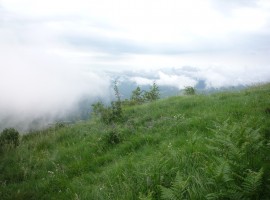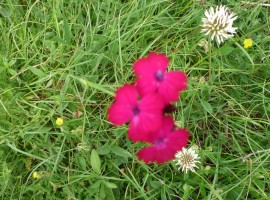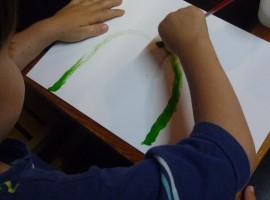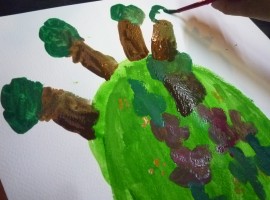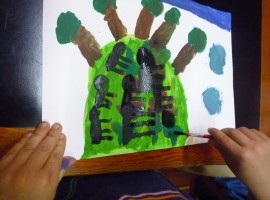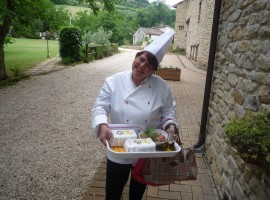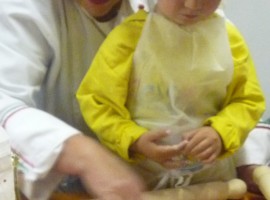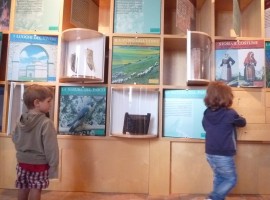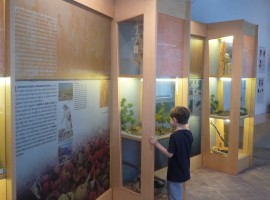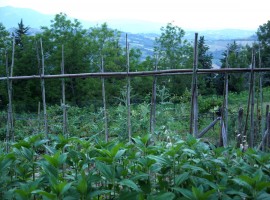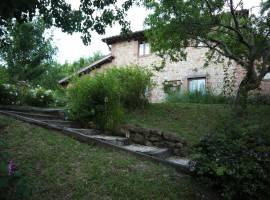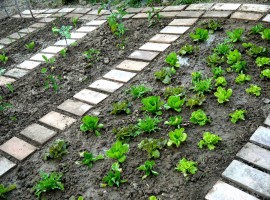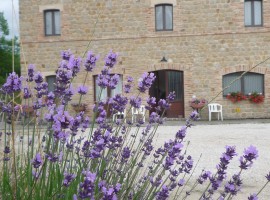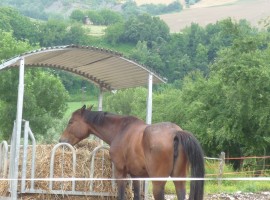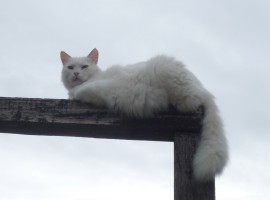1. Be enchanted by Sibilla
Where is the Sybil? Is she real? Is she good or bad?
Children are fascinated by the history that has always conquered travelers and novelists and they can not stop asking questions.
We are among the Sibillini Mountains, in the realm of fairy enchantress (for some) and demonic creature (for others), which, according to legend, lives in a naked and smooth cave situated on the summit of Mount Sibilla. Described as a virgin prophetess in the Aeneid, and as a beauty that enchants in the Renaissance: “The complexion had suave, charming shapes, Charmful language” (Andrea from Barberini, “Guerin Mean of 1473”).
Explorers and the curious have always tried to discover the realm of the Sibyl, entering the cave through a narrow entrance, to bring testimonies of those enigmatic mysterious depths. Then suddenly that access was closed and the myth of the Sibyl remained to fascinate with its legend adults and children.
To learn more, in Montemonaco (in the National Park of the Sibillini Mountains), is an interactive museum suitable for children, where you enter in a place that seems the cave of the Sibyl.
2. Explore the Sibillini Mountains
This mountain is giant but gentle. We can climb it with our feet hungry for adventure. Before we tell explore with all their senses.
Along the path we encounter trees, rocks and ants, meadows full of flowers. Then, we can paint what we saw putting so many colors on the white sheet (and our hands).
In spring there are more than 50 species of wild orchids. After the climb, below us the meadows and hills look like a sea where big white clouds are moving fast.
After the walk the children draw what they saw. A round green line is the magical mountains that have just explored. Above the trees, the flowers and the ants that are black lines and geometric invade any design. The details are more important than everything else.
At the shelter of Amandola have lunch with vegetable soup, “bruschetta”, fresh pasta homemade seasoned with pepper and pecorino cheese, accompanied by excellent red wine.
3. Recognize scents of nature and build a herbarium
In the afternoon we go on a farm surrounded by hills. It’s called “Il Vecchio Tasso” and up to thirty years ago were the ruins of an old farm, that Claudia’s father had bought with the idea of creating a community surrounded by nature.
Today is a farm that welcomes us with lawns, a pool surrounded by greenery, a big garden overlooking the hills, olive groves, an old wash tub of goldfish that today there tells of another time.
There is also a small covered porch for a snack, a swing and a slide where children breathe hours of freedom. Everything is suitable for children.
We knew that nature was fragrant, but not that each of these fragrances had a name. Together with “Il Chirocefalo”, we learn to recognize lavender, rosemary, thyme, mint, fennel. We observe the images from the book and then ran into the garden to gather a small sprig of each herb to be stuck in our booklet fragrant. And our first herbarium is ready.
4. Discover Homemade pasta and Truffle
All these scents make you hungry. Luckily came Mirella, a real Italian cook, who promises us a wonderful dinner made with our own hands. The recipe is very simple: 100 grams of white flour, an egg, a little ‘oil and a pinch of salt. Then comes a lot enegia to knead the dough and make it as thin as a “pizza”.
Do not prepare spaghetti or penne, but a special pasta, the “maltagliati”. This special pasta is made with scraps of dough, those parts that are irregular at the edges.
The little chefs hat and rolling pin with grembiul, have fun like never before to prepare dinner for us adults… we enjoy the rain of flour and sticky hands of children in absolute relaxation!
Later we taste a delicious pasta with truffle sauce and sausage, cooked by Il Vecchio Tasso agritourism.
The truffle is a typical taste of the local cuisine, the forests and preserve this treasure house every self-respecting dog has his nose to find it. Do not miss the White Truffle Fair, which takes place in the first two weeks of November in Amandola.
5. Dance the “saltarello” in the region of 100 Theatres
We go round the narrow streets of Amandola, a village perched at 500 meters high on the Tenna Valley, on the eastern slopes of the Monti Sibillini. The narrow stone streets rise and fall irregularly curved walls, small open spaces and drinking fountains. We arrive at the theater of the village. It is said that each township and village in the territory has one. For this Marche is defined as the region of “a hundred theaters.”
Since the beginning of 1600, in fact many villages felt the need to own your own theater within the walls of the town, and in the mid-1900s there were about 113 theaters, most of which today retain the same charm of yesteryear.
The theater of Amandola is a little gem with stucco and light colored fabrics. Here we learn the steps of the “saltarello”, an old traditional dance of courtship, that was danced in the farmyards during the festivities.
The music and movement of the dancers involve immediately children. This “marchigian tarantula” gives us a glimpse on the fascinating traditions and history of the area. After that, we explore this traditions in the landscape museum of Amelia, a small interactive museum where children discover nature, landscape and traditions using all their senses.
7. Make a stop at the interactive museum in Amandola
How many drawers to open. A huge closet full of curious objects. For each of these there is a good story to listen to, but not a fairy tale like others, a true story … We look at the landscape of Marche through small holes, we hide in the midst of a flock of sheep …
“Everything you see here you can touch.” These are the first words of the museum guide. The sentence is not finished yet that curious little hands of children are already exploring every corner of the interactive museum.
8. Find harmony with the Earth
From the meadows of the La Querceta Marnacchia, an ancient farmhouse nestled in the hills, we enjoy the colors of the sunset behind the hills. Not just arrived the night, nature is full of small magical lights that move intermittently.
Thousands of fireflies in a deep dark and music of crickets in the background: it’s an incomparable setting for us to become accustomed to the noise of cars and city lights.
The barefoot children chase the glowing dots on the lawn of the farm. We enjoy the smell of grass and mint, the fresh air of the Sibillini, thinking how the bond with the earth is still strong in this place.
- Vegetable garden of La Querceta
- La Querceta, Amandola
- Vegetable garden of La Querceta
- Dimensione Natura, San Ruffino Lake
- Horses, Dimensione Natura
- White cat, Dimensione Natura
We met young guys who decided to move here from the north of Italy, to cultivate the land, looking for a way of life more peaceful and in harmony with nature. We were hosted in different accommodation facilities, but each of them with a piece of cultivated land (vegetables, fruit trees and olive trees), from which it draws fruits and vegetables for their guests.
It ‘hard to leave this earth friendly and genuine that has the ability to bring you back to the essence of things. How do you not remain there?
Cover photo: Sibillini, Luigi Alesi, via Flickr
Info: Sibillini Segreti e Sapori
